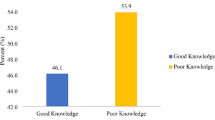Abstract
Folic acid (pteroylmonoglutamic acid) is the stable, fully oxidized form of folate which is used in food fortification and supplements. Keen interest has been generated in folic acid due to its suggested role in prevention of various disorders. Strong evidence from clinical trials indicates preventive effect of folic acid on both occurrence and recurrence of neural tube defects. It also plays a significant role in mitigating the risk of cardiovascular disorders through homocysteine regulation. In addition, the beneficial effect of folic acid in various types of cancers, neurological disorders, conditions affecting pregnancy, and other clinical conditions has been reported in literature. Various guidelines reinforce the need for women to obtain adequate amount of folic acid either through food fortification or supplements. In India, national guidelines on the proper dose of folic acid to pregnant women are not available. Given its significant beneficial effects on health, awareness should be spread among communities on the usage and benefits of folic acid.
Similar content being viewed by others
References
Lucock M. Is folic acid the ultimate functional food component for disease prevention? BMJ. 2004;328(7433):211–4.
Crider KS, Bailey LB, Berry RJ. Folic acid food fortification-its history, effect, concerns, and future directions. Nutrients. 2011;3(3):370–84.
Lucock M. Folic acid: nutritional biochemistry, molecular biology, and role in disease processes. Mol Genet Metab. 2000;71(1–2):121–38.
Wani NA, Hamid A, Kaur J. Folate status in various pathophysiological conditions. IUBMB Life. 2008;60(12):834–42.
Chandra J. Megaloblastic anemia: back in focus. Indian J Pediatr. 2010;77(7):795–9.
Wald DS, Wald NJ, Morris JK, Law M. Folic acid, homocysteine, and cardiovascular disease: judging causality in the face of inconclusive trial evidence. BMJ. 2006;333(7578):1114–7.
Wang X, Qin X, Demirtas H et al. Efficacy of folic acid supplementation in stroke prevention: a meta-analysis. Lancet. 2007;369(9576):1876–82.
Cook S, Hess OM. Homocysteine and B vitamins. Handb Exp Pharmacol. 2005;170:325–38.
Reynolds E. Vitamin B12, folic acid, and the nervous system. Lancet Neurol. 2006;5(11):949–60.
Selhub J, Bagley LC, Miller J, et al. B vitamins, homocysteine, and neurocognitive function in the elderly. Am J Clin Nutr. 2000;71:614S–20S.
Blencowe H, Cousens S, Modell B, et al. Folic acid to reduce neonatal mortality from neural tube disorders. Int J Epidemiol. 2010;39(Suppl 1):i110–21.
Au KS, Ashley-Koch A, Northrup H. Epidemiologic and genetic aspects of spina bifida and other neural tube defects. Dev Disabil Res Rev. 2010;16(1):6–15.
Botto LD, Moore CA, Khoury MJ, et al. Nural tube defects. N Engl J Med. 1999;341:1509–19.
Williams LJ, Rasmussen SA, Flores A, et al. Decline in the prevalence of spina bifida and anencephaly by race/ethnicity. Pediatrics. 2005;116(3):580–6.
De Wals P, Tairou F, Van Allen MI, et al. Reduction in neural-tube defects after folic acid fortification in Canada. N Engl J Med. 2007;357(2):135–42.
Lumley J, Watson L, Watson M, et al. Periconceptional supplementation with folate and/or multivitamins for preventing neural tube defects. Cochrane Database Syst Rev. 2001;3:CD001056.
Rampersaud GC, Bailey LB, Kauwell GPA. Relationship of folate to colorectal and cervical cancer. Review and recommendations for practitioners. J Am Diet Assoc. 2002;102:1273–82.
Choi S-W, Mason JB. Folate and carcinogenesis: an integrated scheme. J Nutr. 2000;130:129–32.
WHO Guideline. Daily iron and folic acid supplementation in pregnant women. Geneva: World Health Organization; 2012.
Nutrient requirements and recommended dietary allowances for Indians. A Report of the Expert Group of the Indian Council of Medical Research; 2009.
Joint SOGC-MOTHERISK Clinical Practice Guideline. Pre-conceptional vitamin/folic acid supplementation 2007: the use of folic acid in combination with a multivitamin supplement for the prevention of neural tube defects and other congenital anomalies. J Obstet Gynaecol Can. 2007;29(12):1003–26.
McNulty B, Pentieva K, Marshall B, et al. Women’s compliance with current folic acid recommendations and achievement of optimal vitamin status for preventing neural tube defects. Hum Reprod. 2011;26(6):1530–6.
Katre P, Bhat D, Lubree H, et al. Vitamin B12 and folic acid supplementation and plasma total homocysteine concentrations in pregnant Indian women with low B12 and high folate status. Asia Pac J Clin Nutr. 2010;19(3):335–43.
Salvi VS, Damania KR. Neural tube defects in India—time for action. Lancet. 2005;366:871–2.
Author information
Authors and Affiliations
Corresponding author
Rights and permissions
About this article
Cite this article
Paayal, C., Ganesh, U. & Shaantanu, D. Indian Perspective on Clinical Aspects, Usage, and Guidelines of Folic Acid. J Obstet Gynecol India 64, 328–331 (2014). https://doi.org/10.1007/s13224-014-0526-3
Received:
Accepted:
Published:
Issue Date:
DOI: https://doi.org/10.1007/s13224-014-0526-3




